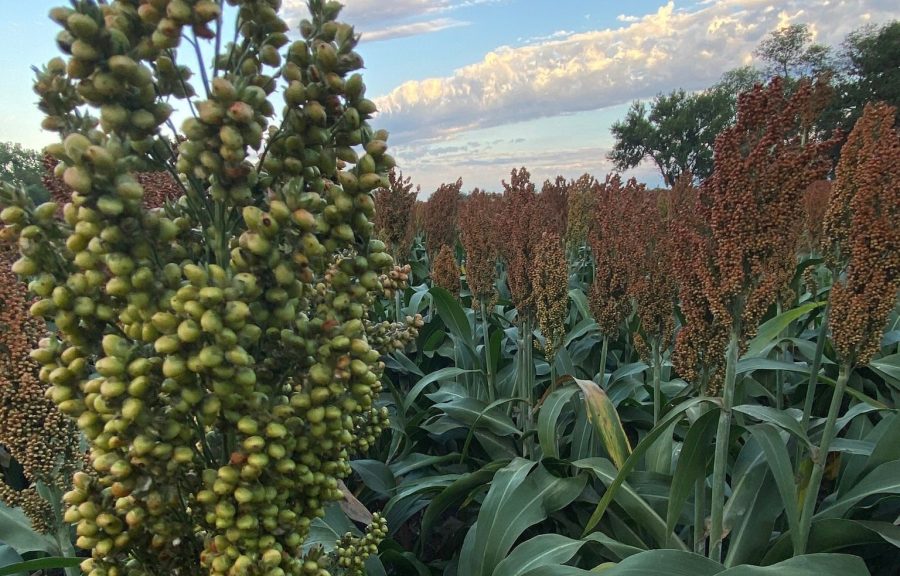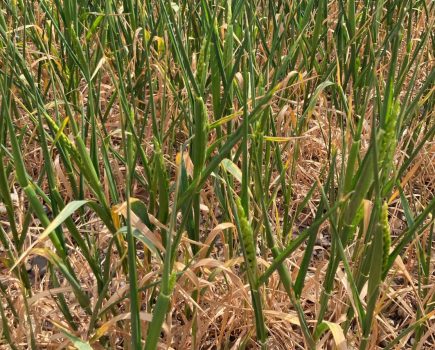A look at how farmers in the South East could benefit from growing the sustainable, climate-resilient crop, by Nate Blum, the head of Sorghum United.
Sorghum is emerging as a climate-resilient crop option for farmers across the South East of England. As extreme weather events like droughts, floods and heatwaves become more frequent due to climate change, shifting to resilient crops will be key for agricultural sustainability.
Sorghum has many characteristics that allow it to tolerate the hotter, drier conditions expected in the South East. With proper management, cultivating sorghum can be a profitable climate adaptation strategy for farmers across the region.
Compared to mainstream crops like wheat, barley, and potatoes, which currently dominate agriculture in the South East, sorghum is more drought-hardy and heat-tolerant. The grain originates from northern Africa, so it is well-adapted to hot and arid environments.
Sorghum varieties from drier regions tend to perform well under moisture stress and high temperatures that would devastate other crops. The sorghum plant has a waxy coating on its leaves that helps retain water. Its deep and fibrous root system can reach soil moisture unavailable to plants with shallower roots. These biological characteristics give sorghum an advantage as the UK climate warms.
In addition to its resilience, sorghum can provide good returns for farmers with proper management. In trials, sorghum yielded over four tonnes per hectare, generating profits comparable to, or greater than, traditional crops.
With irrigation and the use of adapted varieties, yields and profitability can be increased further. Sorghum grown for biofuel ethanol production also fetches higher prices than feed grain, offering farmers more revenue potential. Building out infrastructure for sorghum-based biofuel production could incentivise more regional cultivation.
Transitioning to sorghum at scale does, however, pose some initial difficulties, with growers needing to invest in specialised equipment like sorghum headers to harvest the crop effectively.
Developing markets and finding buyers is also challenging, since sorghum is less commonly grown in the UK. Farmers may need to negotiate contracts directly with purchasers like mega-farms, food companies or biofuel producers until more robust value chains develop.
Agronomically, sorghum has some specific management requirements, like reduced levels of nitrogen fertiliser and wider plant spacing, but none of these hurdles is insurmountable.
To be successful, UK farmers should follow several key production practices:
- Plant sorghum in early spring once soil temperatures reach at least 15°C to ensure good germination rates. Selecting sorghum varieties bred specifically for drought tolerance and adaptation to UK climates will maximise resilience.
- Add fertiliser at planting based on soil test recommendations. Too much nitrogen fertiliser causes excessive vegetative growth, which diverts energy from grain production. Target lower nitrogen rates for sorghum compared to wheat.
- For rainfed production, target a plant density of between 300,000 and 500,000 plants per hectare, depending on the variety. At higher plant populations, wider row spacing of 45 to 75cm can help reduce fungal leaf diseases in humid UK regions.
- Scout sorghum fields frequently and be prepared to apply integrated pest management control measures if populations of pests like aphids exceed economic thresholds.
- Monitor crop maturity closely and harvest sorghum fields promptly when grain reaches physiological maturity to prevent weather losses. Timely harvest followed by rapid grain drying helps maintain quality.
With extreme weather events and climate variability increasing across the South East, shifting to resilient crops like sorghum can lend stability and sustainability to regional agricultural systems. By following best practices tailored to UK climates and securing markets before expanded cultivation, growing this climate-smart grain can be a savvy strategy.







